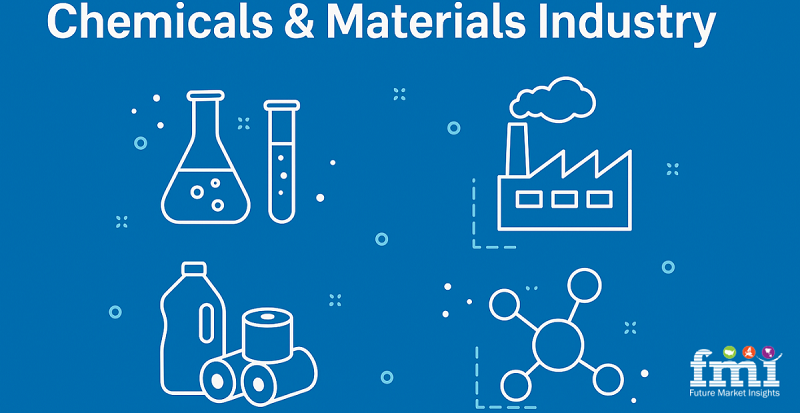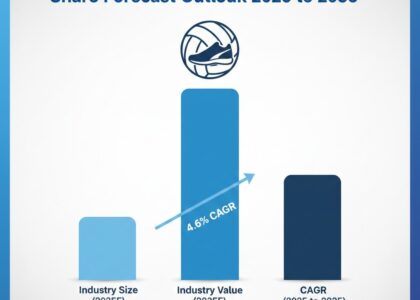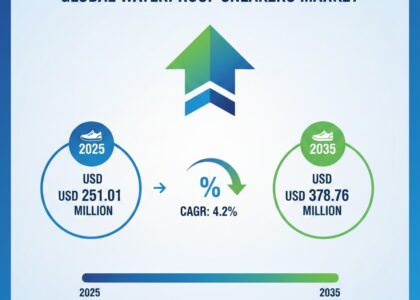In a world increasingly driven by sustainability, ethical sourcing, and high-performance materials, alpaca fiber is emerging as a luxury textile solution that is as functional as it is environmentally responsible. Commonly associated with traditional Andean garments or artisanal handicrafts, alpaca fiber is often overlooked in the broader context of technical and sustainable textile markets. However, this rare natural fiber offers exceptional performance attributes—lightweight warmth, hypoallergenic properties, and natural durability—that make it a strong contender in specialized segments such as outdoor performance apparel and eco-luxury fashion. This article explores a less-discussed but promising topic within the Alpaca Fiber Market: its potential as a sustainable alternative to synthetic fibers in high-performance and luxury applications.
Request Report Sample: https://www.futuremarketinsights.com/reports/sample/rep-gb-10729
Rethinking Alpaca: From Artisanal Craft to Performance Material
Traditionally, alpaca fiber has been used by indigenous communities across Peru, Bolivia, and Ecuador to create warm, durable garments well-suited for high-altitude climates. However, with increasing global awareness around ethical and low-impact fibers, alpaca is gaining new attention among luxury and performance-focused apparel brands. Compared to cashmere and merino wool, alpaca fiber has a lower environmental footprint in terms of water consumption, land degradation, and methane emissions, making it an eco-friendly alternative for conscious consumers.
Modern processing techniques have enabled the fiber to be spun into finer counts, increasing its usability in lightweight garments and technical applications. The fiber’s inherent thermoregulating properties and ability to resist pilling and stretching make it ideal for both cold-weather outerwear and soft next-to-skin layers. Brands like Patagonia and Loro Piana have begun experimenting with alpaca blends, offering high-end consumers a material that is not just luxurious, but also resilient and ethically sourced.
A Sustainable Alternative to Petroleum-Based Fibers
One of the most compelling arguments in favor of alpaca fiber’s future growth lies in its sustainability profile. As the fashion and textile industry comes under mounting scrutiny for its environmental damage—particularly from synthetic fibers like polyester and nylon—natural alternatives like alpaca are gaining traction. Unlike petroleum-based textiles, alpaca fiber is biodegradable, does not release microplastics, and requires minimal chemical processing.
Browse the Complete Report: https://www.futuremarketinsights.com/reports/alpaca-fiber-market
A 2022 study conducted by Textile Exchange compared the life cycle of alpaca fiber to that of merino wool and acrylic fibers. The results showed that alpaca had the lowest carbon footprint per kilogram of processed fiber and consumed 50% less water than sheep wool. In addition, alpacas graze without uprooting plants, allowing their native habitats in the Andes to regenerate naturally. These ecological benefits make alpaca fiber especially attractive to brands and consumers seeking traceability, low emissions, and long-term environmental responsibility.
Emerging Market Trends and Growing International Demand
The global alpaca fiber market, once largely dominated by Peruvian exports, is now seeing increasing contributions from micro-farms in Australia, the United States, and the United Kingdom. As international demand grows, particularly in North America and Europe, a new supply chain model is emerging that focuses on quality control, fair trade certifications, and direct-to-consumer branding.
Consumer preferences are shifting toward premium, traceable garments that align with sustainability values. This is reflected in the rising number of fashion and interior design companies promoting alpaca fiber as a cruelty-free, hypoallergenic alternative to wool and synthetic fabrics. The demand for ‘slow fashion’—emphasizing durability, artisanal quality, and ethical sourcing—is also contributing to the resurgence of interest in this niche market.
Challenges in Scaling Production and Market Penetration
Despite its numerous advantages, alpaca fiber faces several challenges in scaling to meet global demand. The limited number of alpacas globally compared to sheep and goats constrains large-scale production, making the fiber more expensive and less available than competitors. Additionally, inconsistencies in fiber grading, lack of standardization, and limited global awareness act as barriers to mainstream adoption.
Infrastructure challenges in major production regions like the Andes, including limited access to modern processing facilities and sustainable transportation, can also hinder market expansion. However, as demand grows and investment in local and international alpaca supply chains increases, these challenges are likely to be addressed through innovation and strategic partnerships.
Textiles, Fabrics, Yarn & Fibres
Future Outlook: From Niche to Norm in Luxury Textiles
As the global textile industry moves toward transparency, circularity, and high-quality natural fibers, alpaca fiber is well-positioned to evolve from a niche product into a core component of the sustainable fashion and performance wear ecosystem. Innovations in spinning and fabric blending technologies are expanding the possibilities of alpaca applications in areas like technical outerwear, home interiors, and even high-end automotive textiles.
In the coming decade, the Alpaca Fiber Market is expected to grow not just in volume, but in cultural and environmental relevance. With its unique combination of ethical sourcing, low environmental impact, and superior performance characteristics, alpaca fiber offers a compelling narrative that aligns with the values of the next generation of consumers.
Key Segments Profiled in the Alpaca Fiber Industry Survey
Wool Type:
- Huacaya Alpaca Fiber
- Suri Alpaca Fiber
Grade:
- Ultra-Fine Alpaca Fiber (Royal baby) (< 20 Microns)
- Superfine Alpaca Fiber (Baby) (20-22.9 Microns)
- Fine Alpaca Fiber (23-25.9 Microns)
- Medium Alpaca Fiber (26-28.9 Microns)
- Intermediate Alpaca Fiber (Adult) (29-32 Microns)
- Robust Alpaca Fiber (32.1-35 Microns)
Application:
- Alpaca Fiber for Apparels
- Alpaca Fiber for Interior Textiles
- Alpaca Fiber for Floorings
- Alpaca Fiber for Industrial Felting
Region:
- North America
- Latin America
- Western Europe
- Eastern Europe
- APEJ
- Japan
- Middle East & Africa
About Future Market Insights (FMI)
Future Market Insights, Inc. (ESOMAR certified, recipient of the Stevie Award, and a member of the Greater New York Chamber of Commerce) offers profound insights into the driving factors that are boosting demand in the market. FMI stands as the leading global provider of market intelligence, advisory services, consulting, and events for the Packaging, Food and Beverage, Consumer Technology, Healthcare, Industrial, and Chemicals markets. With a vast team of over 400 analysts worldwide, FMI provides global, regional, and local expertise on diverse domains and industry trends across more than 110 countries.
Contact Us:
Future Market Insights Inc.
Christiana Corporate, 200 Continental Drive,
Suite 401, Newark, Delaware – 19713, USA
T: +1-347-918-3531
For Sales Enquiries: sales@futuremarketinsights.com
Website: https://www.futuremarketinsights.com
LinkedIn| Twitter| Blogs | YouTube






